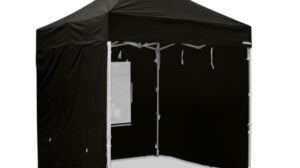(sponsored post)
We’ve all experienced a bad night’s sleep. You stumble through the next day feeling groggy, foggy, and probably more than a little bit cranky. For most, the cure is usually eight hours of undisrupted, pillow hugging rest. But if you or your bed partner snore -or suffer from snoring’s ugly stepsister sleep apnea- then you know getting a good night’s sleep is more of a relationship challenge.
The drill is always the same, countless nights being woken by a snort or a growl, tossing and turning. Worse yet is the terrifying instant when a snore suddenly goes silent while the sleeper struggles to breathe (called sleep apnea)… only to awake with a gasp and the cycle continues all over again. By 3AM both parties’ frustration is at its peak, promises are made to finally see a doctor in an attempt to resolve the conflict, or avoid being suffocated with a pillow by their bed partner. Finally someone caves and heads to the spare bedroom or living room couch. And in the morning, the conversation is brief or avoided altogether. Nothing changes, and the next night the snore wars will continue.
If all this sounds familiar to you, you’re not alone.
In fact, more couples than ever before are opting for separate sleeping quarters entirely. A recent survey suggest as many as 40% of Canadian couples will sleep in different beds at some point. It’s called a “Sleep Divorce”, and it’s a radical response to snoring causing relationship issues.
But one of western Canada’s leading respiratory care companies, RANA Sleep Care, believes there’s a less extreme solution. The solution doesn’t involve leaving or being kicked out of the marital bed, as seen in their latest video spot. Instead, they fiercely believe a better approach is to simply address the root of the problem and treat the snoring!
Snoring and sleep apnea are easily diagnosed with an overnight, take-home sleep study that measures vital information such as breathing, snore decibels and sleeping position. Treatment can be highly effective, but more importantly: getting treatment is also very necessary for this chronic disease.
Over time, restless sleep has more serious consequences. Research shows sleep apnea sufferers are at a greater risk of countless diseases, including obesity, Type 2 diabetes and heart disease. Sleep apnea is thought to be massively underdiagnosed and research shows that those who are not treating their sleep apnea are:
68% more likely to develop coronary heart diseases
58% more likely to have heart failure
189% more likely to have hypertension
76% more likely to have a stroke
“What we find frustrating,” says RANA President, Cory McArthur, “is that many of the sufferers we have seen were reluctant to ask for help with their sleep issues, even though the result of treatment can be life-changing.” This anomaly may be, in part, because the overwhelming majority of sleep apnea sufferers are men who may not even know they have a problem.
As a result, it is the bed partners who suffer first. They can’t get a good night’s rest due to their partners snoring, thrashing and gasping. But they are unable to take any direct action to treat the issue themselves.
“Bed partners are really the catalyst for seeking help for their spouse’s snoring. Often, they need to be the ones who say, enough is enough, it’s time to get some help.” Approximately 75% of people diagnosed with Sleep Apnea have been pushed to find a solution by their sleepless partner.
RANA is on a mission to end the snore wars taking place in many Canadian bedrooms. Currently both snorers and their bed partners can take advantage of a free snoring consultation by visiting snorehelpnow.com, to help understand what their individual risk is for sleep apnea.
Additional facts about sleep apnea:
• 76% of people _who snore have Obstructive Sleep Apnea (OSA). (2009 Canadian Community Health Survey – Sleep Apnea Rapid Response )
• Up to 90% of Sleep Apnea sufferers are undiagnosed. ( M. Singh, P. Liao, S.Kobah, D. N. Wijeysundera, C. Shapiro, F. Chung “Proportion of surgical patients with undiagnosed obstructive Sleep Apnea” – British Journal of Anaesthesia, December 19, 2012)
• Three out of four Canadians reporting sleep apnea (75%) were 45 years and older. (2009 Canadian Community Health Survey – Sleep Apnea Rapid Response )
• Over one in four Canadian adults (26%) was at high risk for having obstructive sleep apnea. (2009 Canadian Community Health Survey – Sleep Apnea Rapid Response )
• 73% of adults at high risk for obstructive sleep apnea were men. (2009 Canadian Community Health Survey – Sleep Apnea Rapid Response)
• Compared to the general adult population, Canadian adults who reported being diagnosed with sleep apnea were:
◦ 2.5 times more likely to report having diabetes;
◦ 1.8 times more likely to report hypertension;
◦ 2.2 times more likely to report heart disease; and,
◦ 2.2 times more likely to report a mood disorder such as depression, bipolar disorder, mania or dysthymia.
▪ (2009 Canadian Community Health Survey – Sleep Apnea Rapid Response)
• It is estimated that the average life span of a patient with untreated OSA is 58 years, much shorter than the average life span of 78 years for men and 83 years for women. (Research: Young & Finn (1998) Thorax 53: S16-19)







Add Comment